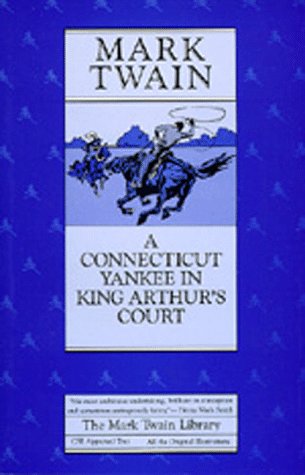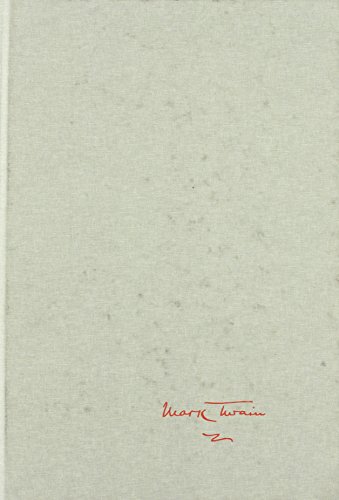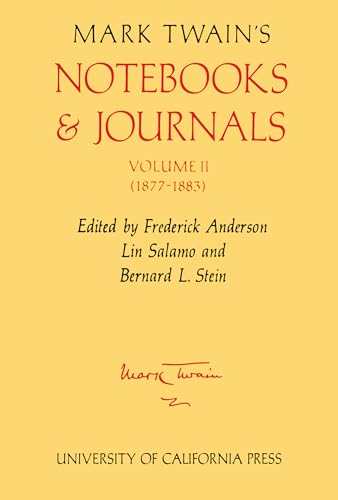twain stein b l (4 risultati)
Tipo di articolo
- Tutti gli articoli
- Libri (4)
- Riviste e Giornali
- Fumetti
- Spartiti
- Arte, Stampe e Poster
- Fotografie
- Mappe
-
Manoscritti e
Collezionismo cartaceo
Condizioni
- Tutte
- Nuovi
- Antichi o usati
Legatura
Ulteriori caratteristiche
- Prima edizione (2)
- Copia autografata
- Sovraccoperta
- Con foto
- No print on demand
Paese del venditore
Valutazione venditore
-
A Connecticut Yankee in King Arthur's Court
Editore: University of California Press, 1984
ISBN 10: 0520051092ISBN 13: 9780520051096
Da: Anybook.com, Lincoln, Regno Unito
Libro
Condizione: Fair. Beard, Daniel Carter (illustratore). This is an ex-library book and may have the usual library/used-book markings inside.This book has soft covers. In fair condition, suitable as a study copy. Please note the Image in this listing is a stock photo and may not match the covers of the actual item,800grams, ISBN:0520051092.
-
Mark Twain's Notebooks & Journals. Volume I [1] [One] (1855-1873). Volume II [2] [Two] 1877-1883. 2 vols.
Editore: Berkeley, etc.: University of California Press, 1975., 1975
ISBN 10: 0520023269ISBN 13: 9780520023260
Da: Ted Kottler, Bookseller, Redondo Beach, CA, U.S.A.
Libro Prima edizione
Hardcover. Condizione: Very Good. No Jacket. 1st Edition. xxi, 668 pp, 1 leaf; xv, 701, [1] pp. Original cloth. Top edges of pages foxed. Signature of former owner on pastedown of Vol. II. Else a Very Good+ set, without dust jackets. The Mark Twain Papers. ISBN for Vol. II: 0520025423. 'In the summer of 1855, when the nineteen-year-old Sam Clemens traveled from Saint Louis to Hannibal, Paris, and Florida, Missouri, and then to Keokuk, Iowa, he carried with him a notebook in which he entered French lessons, phrenological information, miscellaneous observations, and reminders about errands to be performed. This first notebook thus took the random form which would characterize most of those to follow. About the text: In order to avoid editorial misrepresentation and to preserve the texture of autograph documents, the entries are presented in their original, often unfinished, form with most of Clemens' irregularities, inconsistencies, errors, and cancellations unchanged. Clemens' cancellations are included in the text enclosed in angle brackets, thus ; editorially-supplied conjectural readings are in square brackets, thus [word]; hyphens within square brackets stand for unreadable letters, thus [--]; and editorial remarks are italicized and enclosed in square brackets, thus [blank page}- A slash separates alternative readings which Clemens left unresolved, thus word/word. The separation of entries is indicated on the printed page by extra space between lines; when the end of a manuscript entry coincides with the end of a page of the printed text, the symbol [#] follows the entry. A full discussion of textual procedures accompanies the tables of emendation and details of inscription in the Textual Apparatus at the end of each volume; specific textual problems are explained in headnotes or footnotes when unusual situations warrant. The twelve notebooks in volume 1 provided information about the eighteen years in which the most profound, even dramatic, changes took place in Clemens' life. He early achieved the limits of his boyhood ambition by becoming a steamboat pilot on the Mississippi River, a position there is no reason to believe he would have abandoned if the Civil War had not forced him to do so. In fleeing from a war which principle and temperament prevented him from supporting, Clemens entered into the first stages of his literary career by serving as a reporter for newspapers in Virginia City and San Francisco. When the restricted experiences available to a local reporter had been thoroughly explored, he moved on as a traveling correspondent to the Sandwich Islands and then still farther to Europe and the Near East. The latter travels provided him with material for The Innocents Abroad, the book that established Mark Twain as a popular author with an international reputation in 1869. In 1872 he further exploited his personal history by publishing Roughing It and in the same year visited England to gather material on English people and institutions. He returned to England the following year, this time accompanied by his family and by a secretary who would record the observations printed as the last notebook in volume 1. Volume 2 of Mark Twain's Notebooks and Journals, documenting Clemens' activities in the years from 1877 to 1883, consists largely of the record of three trips which would serve as the source for three travel narratives: the excursion to Bermuda, a prolonged tour of Europe, and an evocative return to the Mississippi River. Despite the common impulse to preserve observations and impressions for literary use, the contents of the notebooks are remarkably different in their vitality-and the works which developed from the notes are correspondingly varied.'.
-
Mark Twain's Notebooks & Journals. Volume I [1] [One] (1855-1873). Volume II [2] [Two] 1877-1883. 2 vols.
Editore: Berkeley, etc.: University of California Press, 1975., 1975
ISBN 10: 0520025423ISBN 13: 9780520025424
Da: Ted Kottler, Bookseller, Redondo Beach, CA, U.S.A.
Libro Prima edizione
Hardcover. Condizione: Very Good. No Jacket. 1st Edition. xxi, 668 pp, 1 leaf; xv, 701, [1] pp. Original cloth. Top edges of pages foxed. Signature of former owner on pastedown of Vol. II. Else a Very Good+ set, without dust jackets. The Mark Twain Papers. ISBN for Vol. I: 0520023269. 'In the summer of 1855, when the nineteen-year-old Sam Clemens traveled from Saint Louis to Hannibal, Paris, and Florida, Missouri, and then to Keokuk, Iowa, he carried with him a notebook in which he entered French lessons, phrenological information, miscellaneous observations, and reminders about errands to be performed. This first notebook thus took the random form which would characterize most of those to follow. About the text: In order to avoid editorial misrepresentation and to preserve the texture of autograph documents, the entries are presented in their original, often unfinished, form with most of Clemens' irregularities, inconsistencies, errors, and cancellations unchanged. Clemens' cancellations are included in the text enclosed in angle brackets, thus ; editorially-supplied conjectural readings are in square brackets, thus [word]; hyphens within square brackets stand for unreadable letters, thus [--]; and editorial remarks are italicized and enclosed in square brackets, thus [blank page}- A slash separates alternative readings which Clemens left unresolved, thus word/word. The separation of entries is indicated on the printed page by extra space between lines; when the end of a manuscript entry coincides with the end of a page of the printed text, the symbol [#] follows the entry. A full discussion of textual procedures accompanies the tables of emendation and details of inscription in the Textual Apparatus at the end of each volume; specific textual problems are explained in headnotes or footnotes when unusual situations warrant. The twelve notebooks in volume 1 provided information about the eighteen years in which the most profound, even dramatic, changes took place in Clemens' life. He early achieved the limits of his boyhood ambition by becoming a steamboat pilot on the Mississippi River, a position there is no reason to believe he would have abandoned if the Civil War had not forced him to do so. In fleeing from a war which principle and temperament prevented him from supporting, Clemens entered into the first stages of his literary career by serving as a reporter for newspapers in Virginia City and San Francisco. When the restricted experiences available to a local reporter had been thoroughly explored, he moved on as a traveling correspondent to the Sandwich Islands and then still farther to Europe and the Near East. The latter travels provided him with material for The Innocents Abroad, the book that established Mark Twain as a popular author with an international reputation in 1869. In 1872 he further exploited his personal history by publishing Roughing It and in the same year visited England to gather material on English people and institutions. He returned to England the following year, this time accompanied by his family and by a secretary who would record the observations printed as the last notebook in volume 1. Volume 2 of Mark Twain's Notebooks and Journals, documenting Clemens' activities in the years from 1877 to 1883, consists largely of the record of three trips which would serve as the source for three travel narratives: the excursion to Bermuda, a prolonged tour of Europe, and an evocative return to the Mississippi River. Despite the common impulse to preserve observations and impressions for literary use, the contents of the notebooks are remarkably different in their vitality-and the works which developed from the notes are correspondingly varied.'.
-
Mark Twain's Notebooks and Journals (Two Volumes) Volume I: 1855 - 1873 / Volume II: 1877 - 1883.
Editore: Berkeley, Calif. [u.a.], Publishers: University of California Press, 1975., 1975
Da: Ganymed - Wissenschaftliches Antiquariat, Meldorf, Germania
Two Volumes. Gr.-8°. XXI, 668 Pages / XV, 701 Pages. Original Hardcover-Volumes. Library-stamp [dropped out] verso Title, on last Page, and on foot-cut. Inside otherwise very good Condition. No Markings in the Text! No Underlinings! No private Owner-Notation! The Covers alre minimally rubbed and minimally bumped. ('The Mark Twain Papers').





